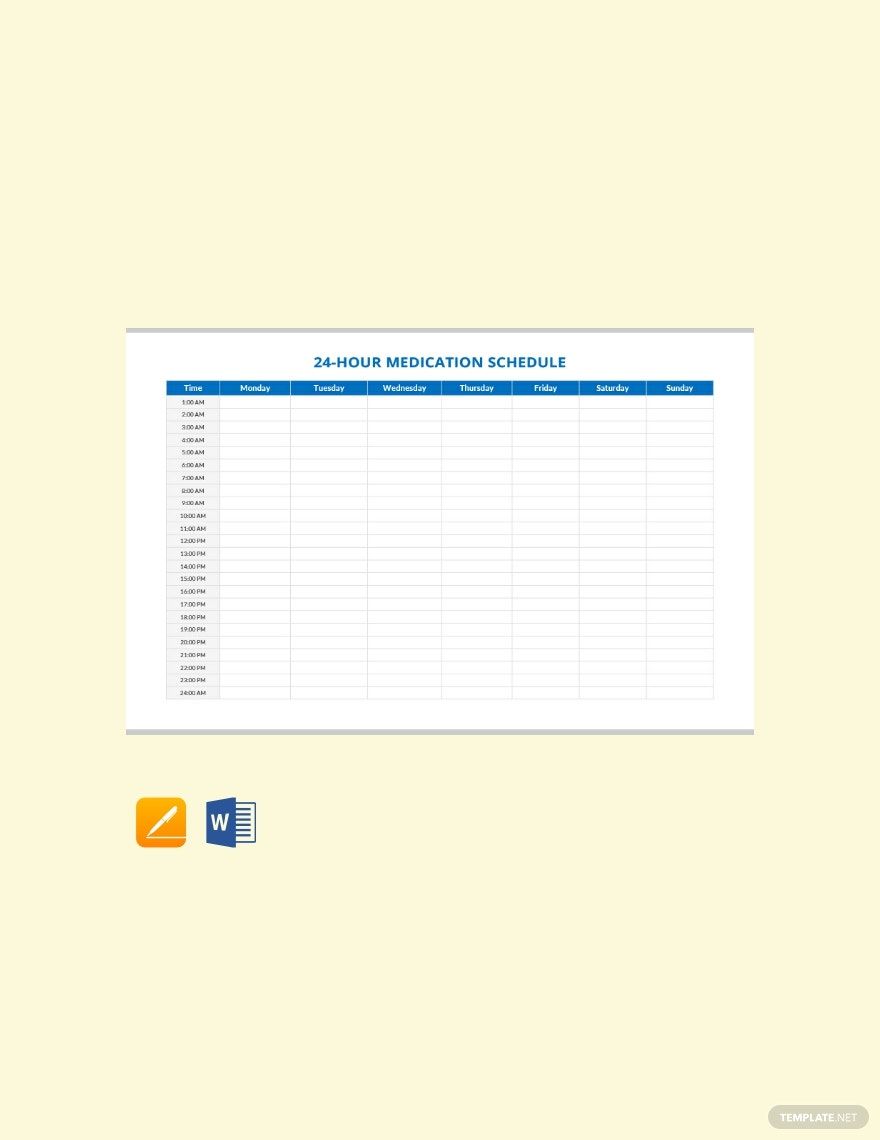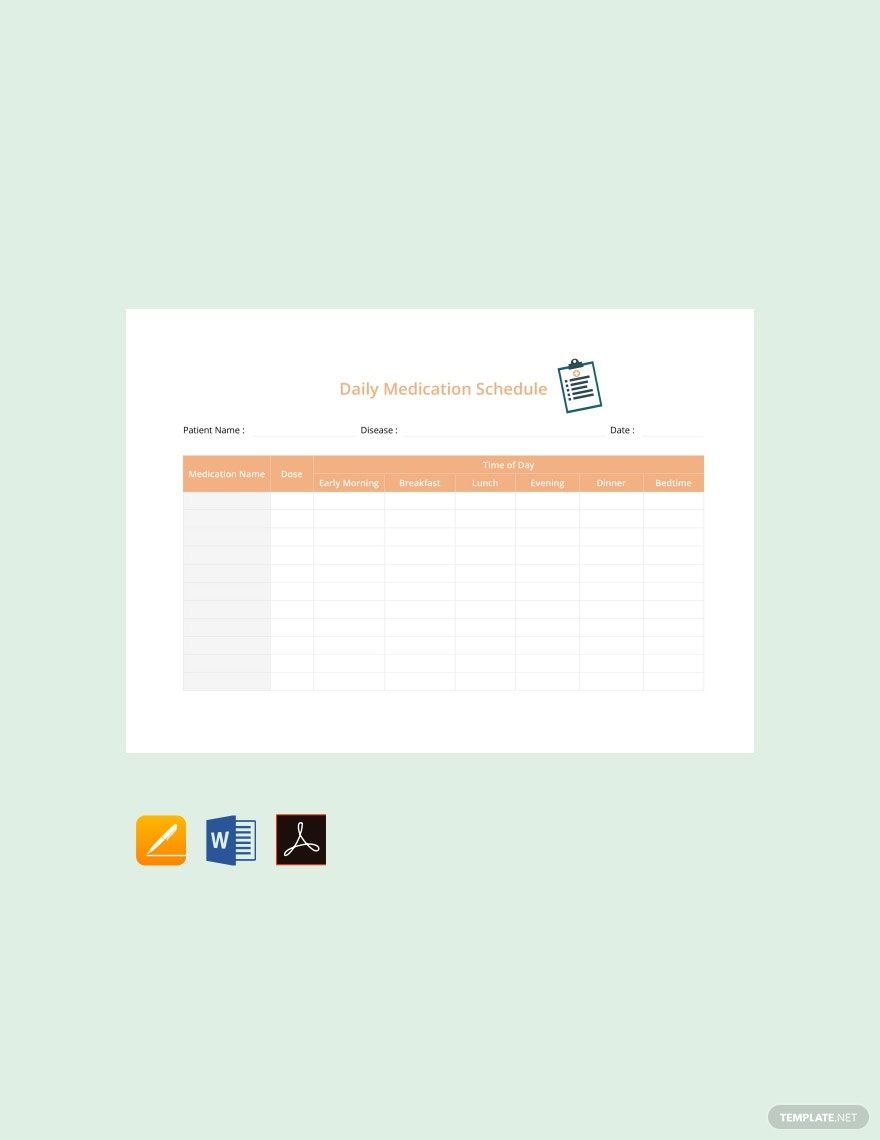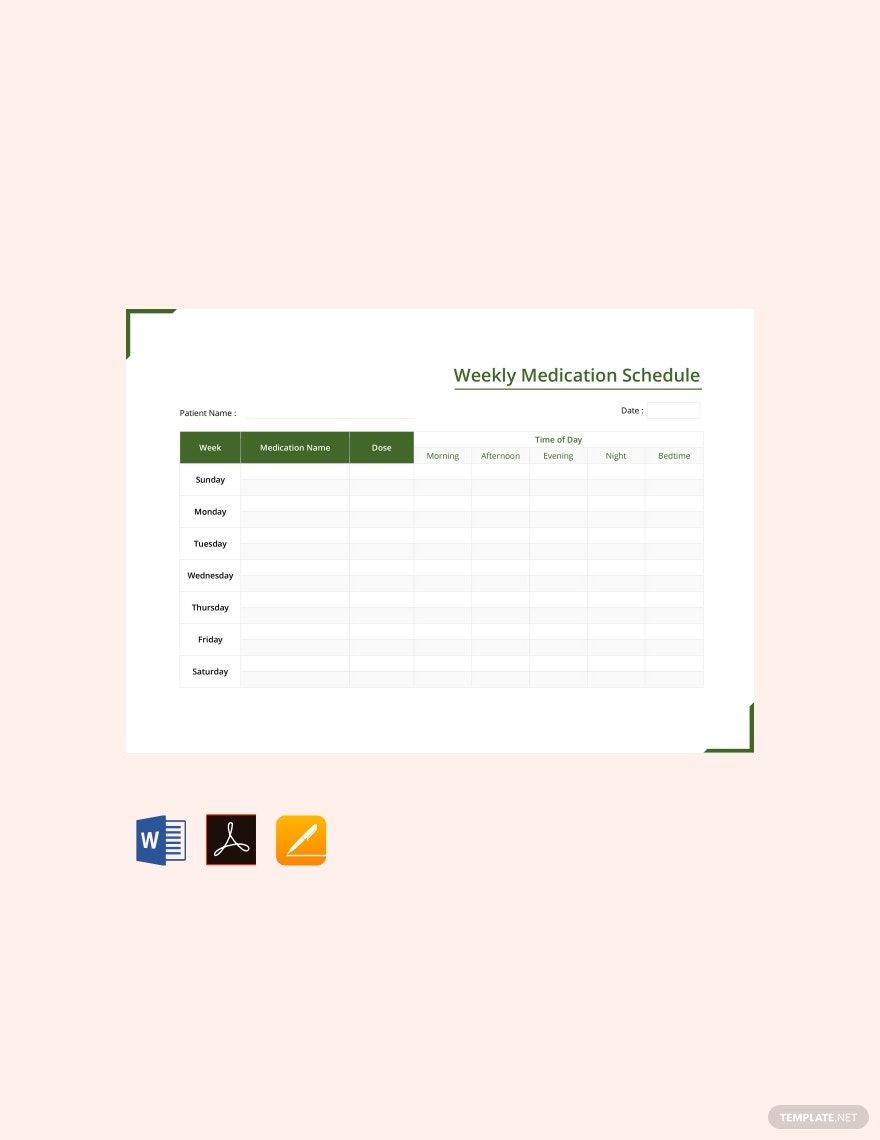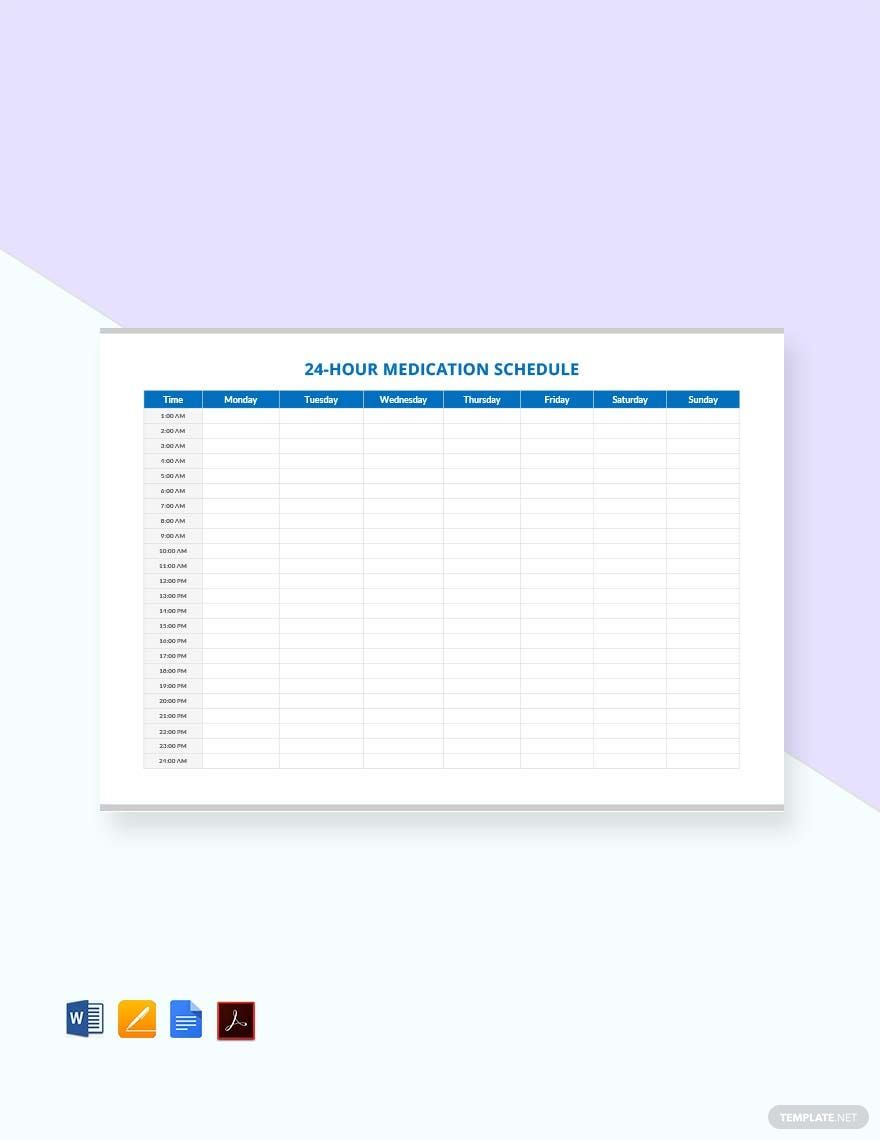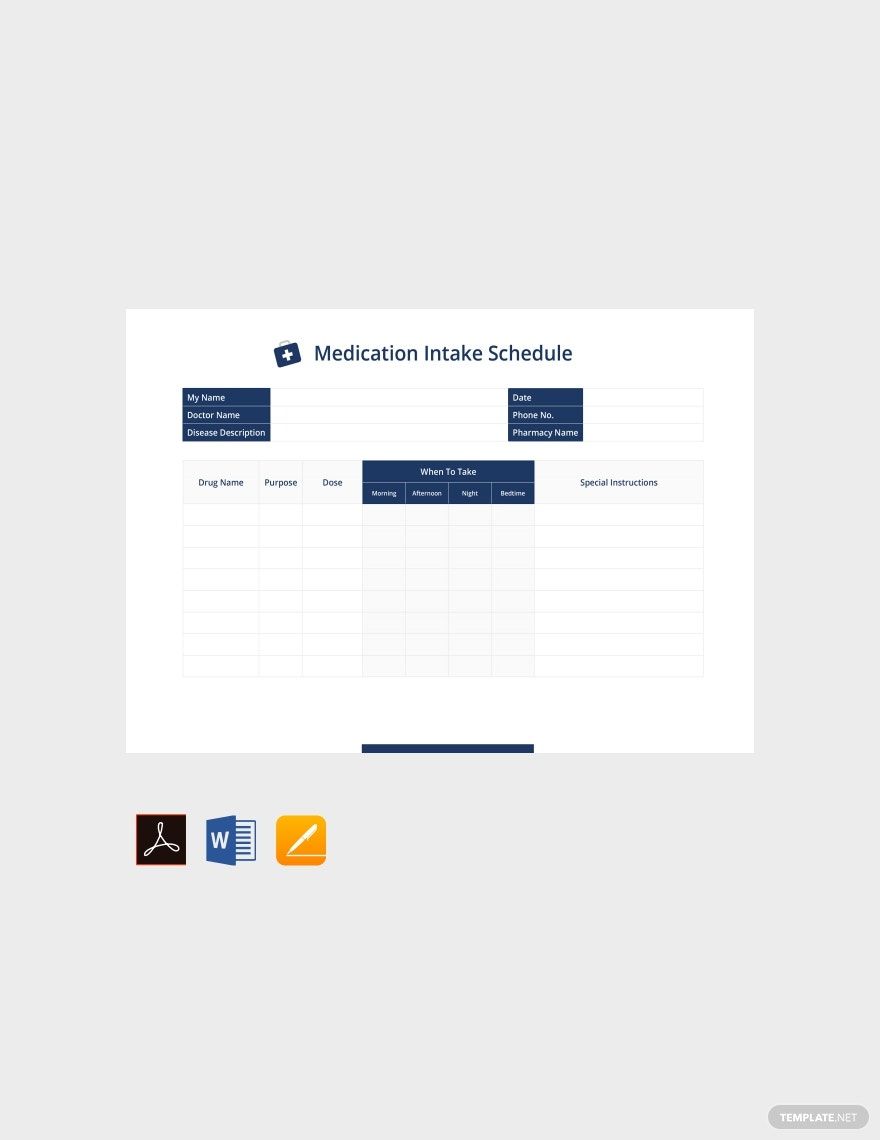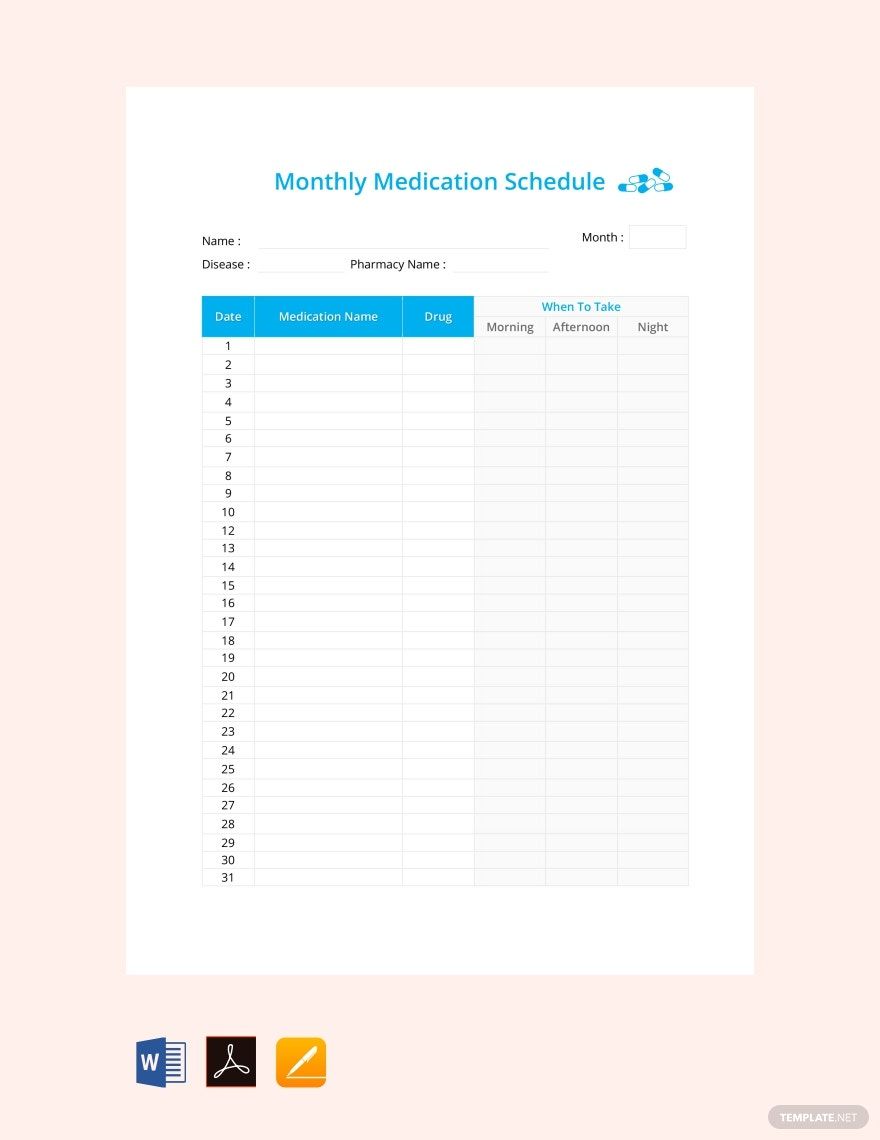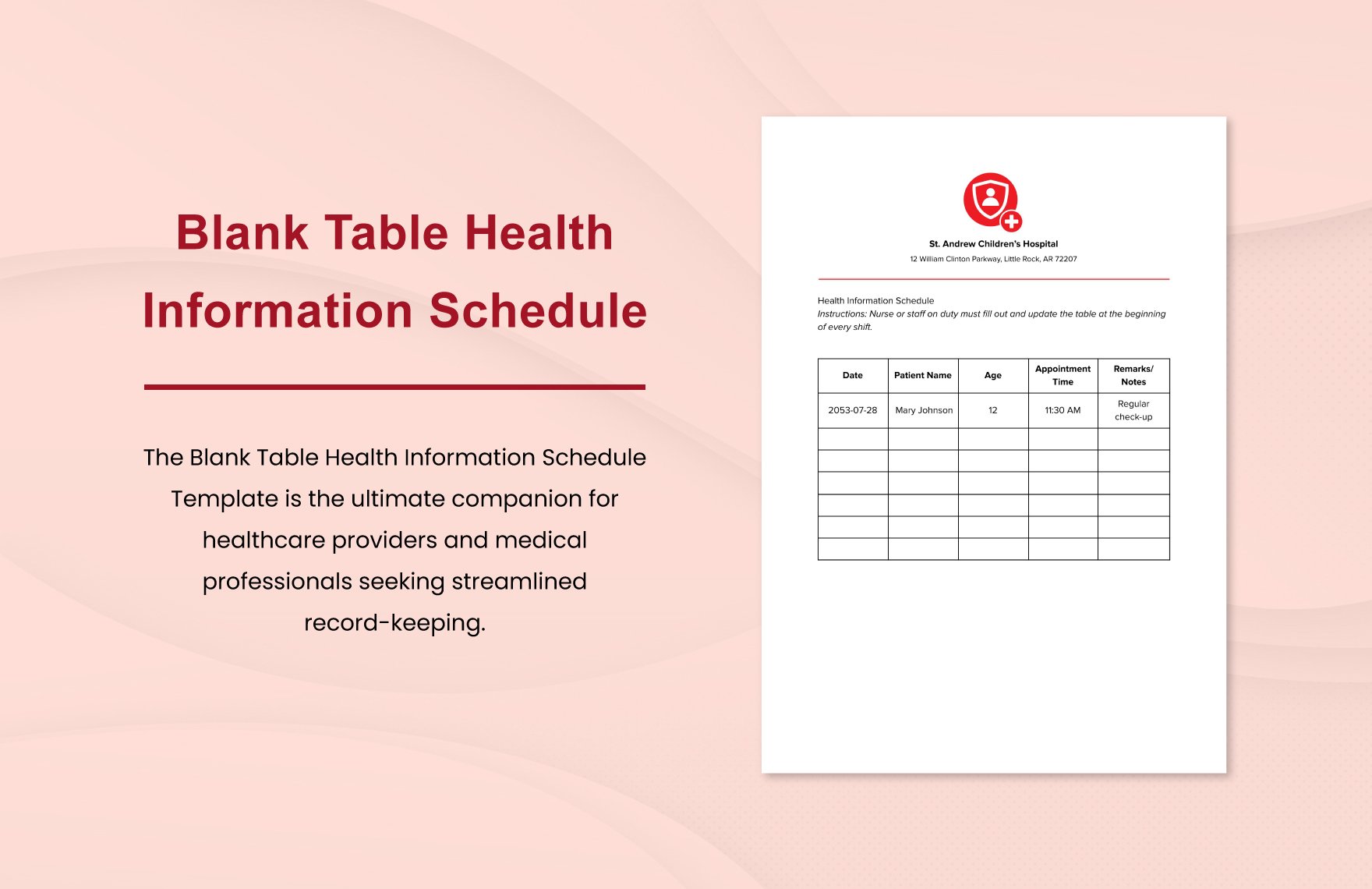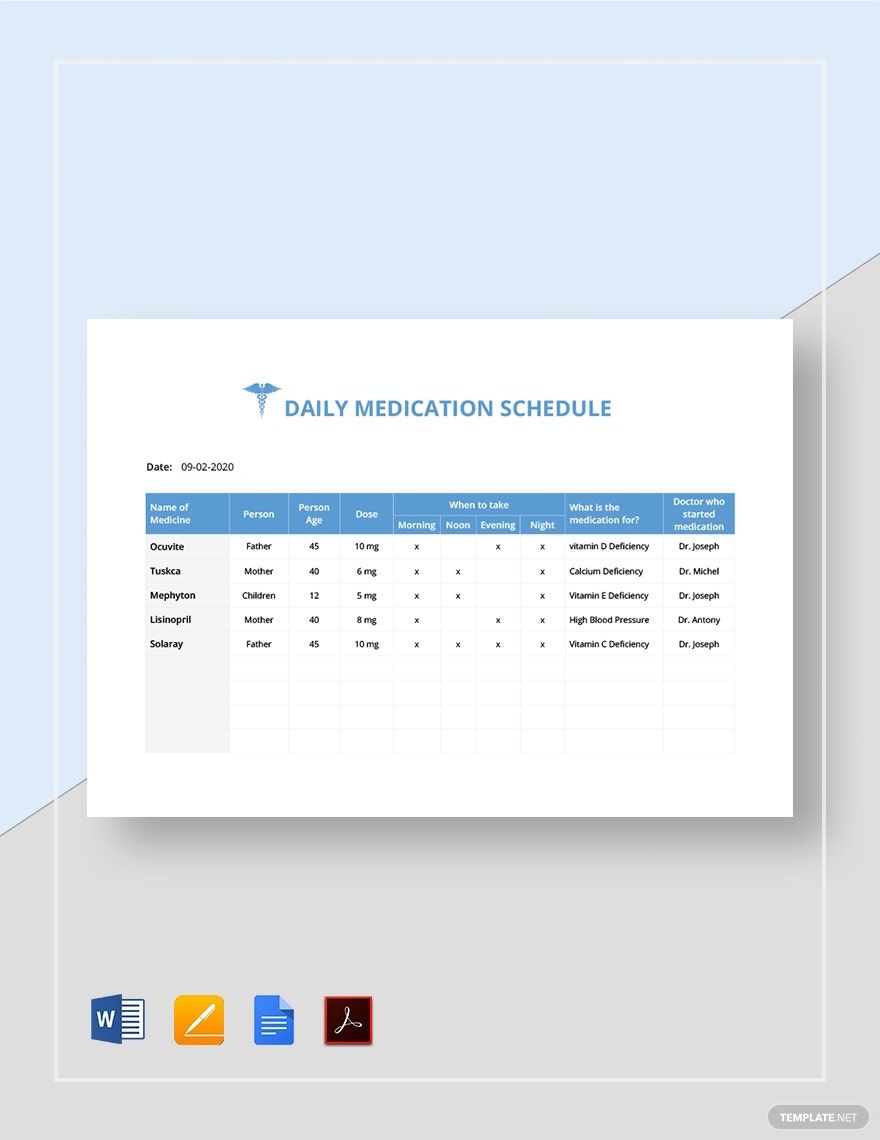Health is truly the greatest wealth we have. With disturbed health, we can't do anything. And as a result, we are not productive on our day. To have good-conditioned health, one must do things that can maintain it, like exercise, a balanced diet, and of course, taking medicine. If you are a man of work, then you must be busy and tend to forget the latter. We will help you with that through our Medication Schedule Template in Microsoft Word. You can work easily with our product because it is 100% customizable and editable. It is printable in A4 & US sizes. Download now, and seize the moment to be healthy.
Medication Schedule Templates in Word
- Ticket
- Quotation
- Receipt
- Recipe Card
- Proposal
- Contract
- Statement
- Newsletter
- Coupon
- Bill of Sale
- Agreement
- Affidavit
- Memo
- White Paper
- Itinerary
- Email Signature
- Postcard
- Plan
- Planner
- Program
- Note
- Cover Page
- ID Card
- Banner
- Form
- Envelope
- CV
- Ebook
- Manual
- Notice
- Magazine
- Thesis
- Bookmark
- Lesson Plan
- APA
- Job Description
- Cover Letter
- Sign In Sign Out
- Poster
- Chart
- List
- Time Sheet
- To-Do List
- Log
- Assessment
- Teacher
- Business
- HR
- Marketing
- Sale
- Advertising
- Finance
- Accounting
- Legal
- Administration
- Operations
- Health Safety
- Bookkeeping
Organize Your Health Regimen with Effortless Precision: Discover Free Pre-Designed Medication Schedule Templates in Microsoft Word by Template.net
Medication Schedule Templates by Template.net are a game-changer for individuals seeking to manage their health regimen efficiently. Designed for everyone from busy professionals to caregivers, these templates empower you to create clear, professional-grade medication schedules without the need for any design experience. Whether you're managing prescriptions for a loved one or coordinating multiple medications for yourself, these templates make it simple. With a rich selection of pre-designed layouts available at no cost, you can conveniently download and print them in Microsoft Word. Enjoy the ease of an organized health schedule with free templates that require no previous design skills, ensuring a quick setup that fits both digital and print formats seamlessly.
Explore a vast array of beautifully pre-designed Medication Schedule Templates that cater to a variety of health management needs, ensuring you stay on top of your wellness routine. Template.net offers regularly updated designs, providing fresh options that suit changing needs or new health priorities. With multiple premium templates also available, the flexibility to customize your schedules enhances the solution's appeal, making it adaptable for both personal and professional use. Download directly or share via email for greater convenience and reach. Leverage both free and premium templates to maximize flexibility and keep your medication plan meticulously organized.
